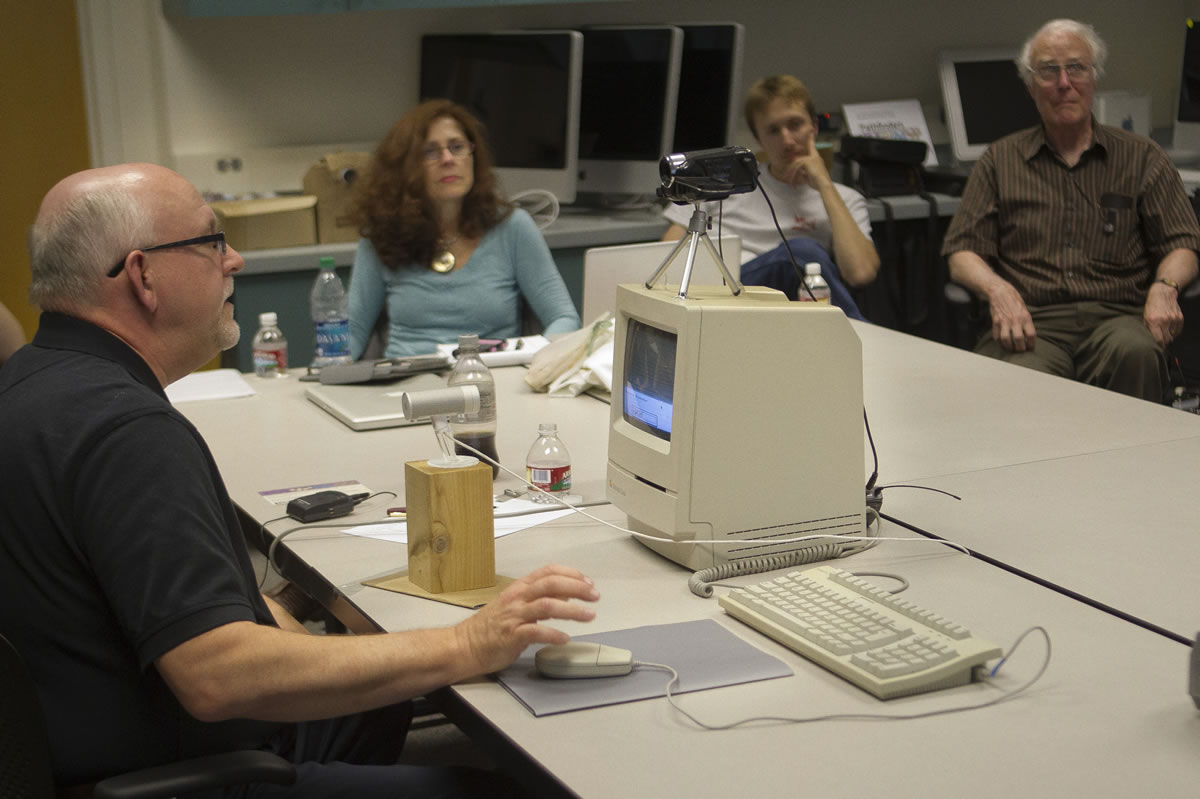On the Web:
For more information about the project visit:
http://dtc-wsuv.org/wp/pathfinders/
An ambitious effort is under way in Vancouver to preserve electronic literature from the past.
The project, “Pathfinders: Documenting the Experience of Early Digital Literature,” debuted at Washington State University Vancouver this week.
The project is led by Dene Grigar, director and associate professor in the digital technology and culture program at WSU Vancouver, and Stuart Moulthrop, an English professor at the University of Wisconsin-Milwaukee.
With constant changes in technology, electronic artists face a continuous demand to preserve and update their work.
For these artists, Grigar said, in order to stay “in” with audiences, they have to stay up with technology.
What exactly is electronic literature?
Electronic literature is designed with a computer in mind, Grigar said. The work can be animated or interactive, and is crafted on a computer for digital use, she said.
Works from classic poet Emily Dickinson are replicated digitally but are not pieces of electronic literature, explained Grigar. In contrast, electronic literature cannot be experienced on paper, she said.
“If words started moving in a book, you would want your meds checked,” she joked.
On campus, Grigar’s media lab of 24 vintage Macintosh computers allow her to read her collection of electronic literature from the 20th century, she said. But in 20 years, when those computers are gone, the artists’ material will become inaccessible, she said.
“I don’t want to see their work die,” Grigar said.
For electronic writers, the emergence of Adobe Flash Player was revolutionary, she said. Flash Player allows electronic works to be displayed on a variety of digital platforms.
But Flash also rendered their work inaccessible in the mobile world. Tablets and iPhones aren’t necessarily compatible with Flash Player.
“Fast forward to 10 years from now, when everything is mobile,” Grigar said.
Electronic literature must be preserved for it to be accessible with the latest technology. This work needs to be done all of the time, said Moulthrop.
Yet artists do not always have the money or resources to do so, said Grigar.
Without it, electronic literature will be lost, stressed Grigar.
“We won’t understand the future if we don’t understand the past,” she said.
Pathfinders
The “Pathfinders” project, funded through a $52,003 Digital Humanities Start-up Grant from the National Endowment for the Humanities, centers on Grigar’s and Moulthrop’s goal to both preserve the work and the human experience with early digital art.
Scheduled throughout the fall, four electronic artists will complete a “traversal” of their work. Subjects range from feminist work to cultural critiques, Grigar said.
The “traversal” method requires the artist, along with two chosen candidates unfamiliar with the work, to read through the electronic piece on film using the software it was designed for, Grigar said.
As the artists and candidates read the works, their sessions are recorded using modern technologies.
Moulthrop, the first guest of the project, completed a “traversal” on Tuesday. Using a Macintosh Classic, he read one of his best-known works, “Victory Garden.”
Moulthrop clicked away and read along to the several layers of his hypertext piece. Each word was hyperlinked to a separate page with a connecting narrative. The piece was spontaneous, yet gave the reader directional control of the story.
“Victory Garden,” produced in 1991, was created on a program called Storyspace, on a 31/2-inch diskette and was released in stores for $20. Now in its original form, the piece can only be viewed on the vintage computers unless it is modified, like many other electronic pieces of the past.
Web book
A free interactive Web book compiled with the various “traversals” will be released upon project completion, Grigar said. The “traversals” will also be available on various international databases.
In an ongoing display at the Nouspace Gallery & Media Lounge, located inside the North Bank Artists Gallery at 1005 Main St. in Vancouver, the public is welcome to interact with the work of the four featured artists throughout the duration of the project. The last artist scheduled for a “traversal” is in October, according to the Pathfinders website.
If their unique method of preservation is successful, Grigar and Moulthrop plan to apply for additional grant money to continue their efforts, Grigar said.



